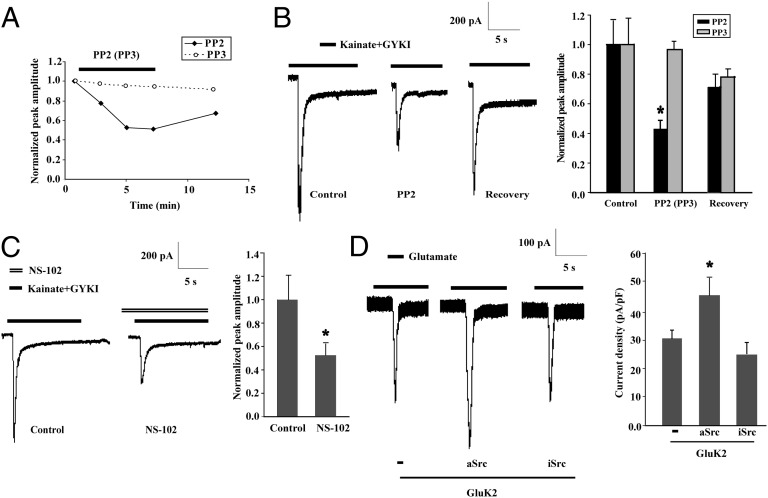Fig. 1.
Src family kinases strengthen kainate receptor activity. (A) Time course of kainate-stimulated peak currents from two representative hippocampal neurons treated with PP2 or PP3. After 6 min, the drugs were washed out. (B) Whole-cell patch-clamp recordings show an Src-dependent increase in kainate-evoked currents. The representative traces show the kainate receptor-mediated currents before (Control), during treatment (PP2 or PP3), and after treatment (recovery) in a single hippocampal neuron. The peak amplitudes are normalized to respective control and expressed as mean ± SEM (n = 8).*P < 0.05 vs. Control. (C) Kainate receptor currents were blocked by the GluK2 inhibitor NS-102. The peak amplitudes are normalized to control and expressed as mean ± SEM (n = 6). *P < 0.05 vs. control. (D) Constitutively active Src (aSrc), but not inactive Src (iSrc), increases GluK2(Q)-mediated currents induced by glutamate. The current density is expressed as current amplitude divided by capacitance (pA/pF). Results are expressed as mean ± SEM (n = 20–25). *P < 0.05 vs. GluK2.

